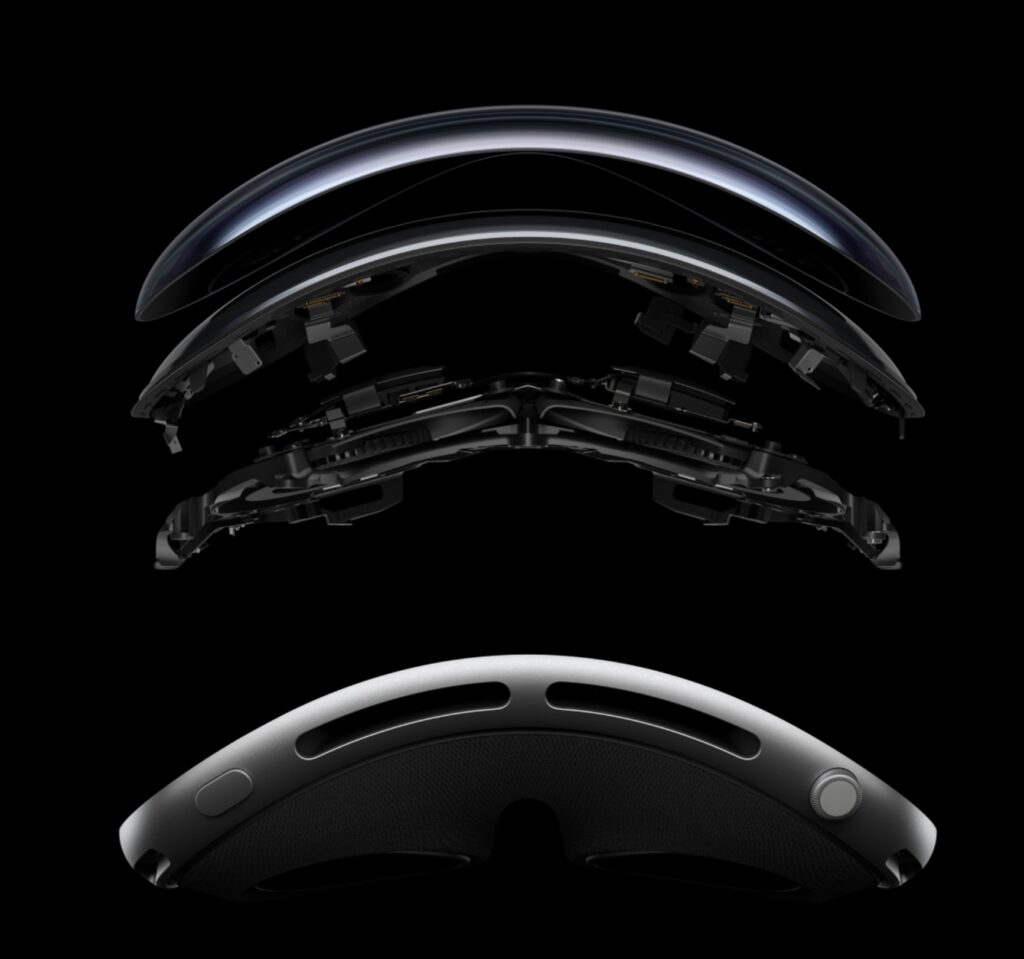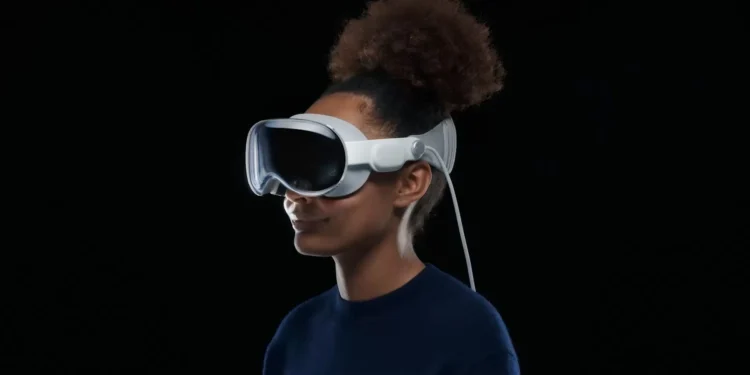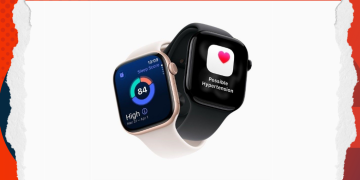Apple’s Vision Pro is more than just a mixed reality headset; it’s a revolution in spatial computing. This device combines augmented reality (AR) and virtual reality (VR) to provide an entirely new way of interacting with technology. But is Apple’s Vision Pro poised to be the iPhone moment for AR/VR, or is it simply a luxury experiment?
Where Apple Vision Pro Stands Today
Launched as Apple’s most ambitious product in over a decade, the Vision Pro integrates AR and VR into spatial computing with the goal of changing how we work, play, and live. Here’s a look at the key features:

- Micro OLED displays providing 23 million pixels across both eyes for stunning clarity
- Advanced hand and eye tracking that eliminates the need for traditional controllers
- Powered by Apple’s M2 and R1 chips, enabling real-time, low-latency processing
- A sleek, futuristic design though bulky for long use, it’s the beginning of a new form factor
However, the $3,499 price tag keeps it firmly in the luxury product category, not yet accessible for mainstream consumers. The Vision Pro is primarily aimed at developers and early adopters, much like the initial iPhone and Apple Watch.
The Short-Term Future (1-2 Years): Expanding the VisionOS Ecosystem
Apple’s Vision Pro is only as powerful as the apps it runs. Over the next two years, Apple will focus on expanding VisionOS to support a broader range of applications and use cases:
1. More Apps and Developer Adoption for VisionOS
Apple is expected to aggressively market VisionOS to app developers, particularly in spatial productivity tools like Figma, Notion, and other AR/VR collaboration platforms. Expect partnerships with Disney, Netflix, and gaming companies to bring immersive media content to the Vision Pro.
2. Enterprise Use Cases for Vision Pro
Much like how the iPad found success in industries such as healthcare and education, the Apple Vision Pro is expected to become a tool in industries like architecture, engineering, and virtual medical simulations. Enterprise adoption will play a key role in driving Vision Pro’s future success.

Multitasking between Microsoft 365 productivity apps is a breeze with life-size windows that can take advantage of the infinite canvas of Apple Vision Pro.
3. Improvements in Comfort and Battery Life
While the bulkiness and battery life of the Vision Pro are notable complaints, future iterations will likely focus on improving ergonomics. Apple could introduce modular battery solutions and lighter accessories to make the Vision Pro more comfortable for extended use.
The Mid-Term Future (3-5 Years): The Road to Mass Adoption
- A More Affordable Model: Apple will likely introduce a cheaper version, perhaps cutting out ultrapremium components while keeping core functionality intact. Think of it like the difference between the iPhone Pro and standard iPhone.
- Glasses-Like Form Factor: Vision Pro is still bulky. Future iterations will slim down significantly, moving closer to AR glasses rather than a full headset. just look at the Meta’s Ray-Ban Smart Glasses Get a Boost with AI, Live Translation, and Shazam Support – Techsoma Middle East
- Apple’s AI & VisionOS Evolution: With Apple ramping up AI efforts, expect Vision Pro to integrate more deeply with Siri and generative AI, making interactions even more seamless.
The Long-Term Future (5-10 Years): Spatial Computing as the New Normal
- Replacing Screens: The ultimate goal? A future where we don’t need monitors, TVs, or even phones. The Vision Pro or its successors could project screens anywhere, turning real world surfaces into interactive displays.
- Mainstream Consumer Adoption: If prices drop and the hardware becomes as natural as wearing glasses, Vision Pro could redefine computing the way the iPhone did.
- Neural Interfaces? Apple is likely watching brain-computer interface research closely. Future iterations might remove hand tracking altogether, letting users interact purely with their thoughts.
Is Vision Pro the Future?
Right now, Vision Pro is not ready for everyone but Apple is playing the long game. If they execute correctly, spatial computing could eventually replace traditional screens. The question isn’t if Apple will make Vision Pro mainstream it’s when.














